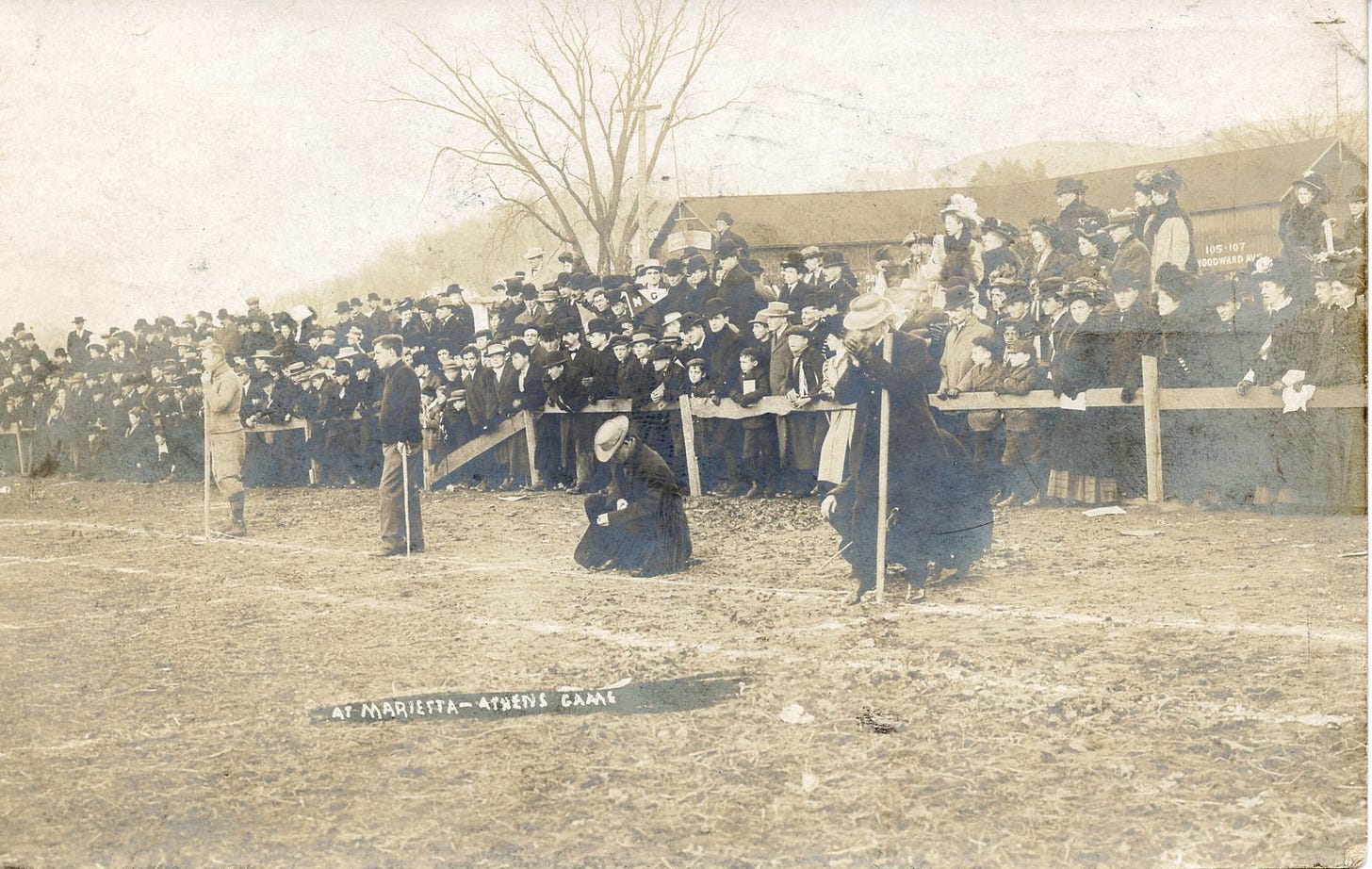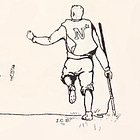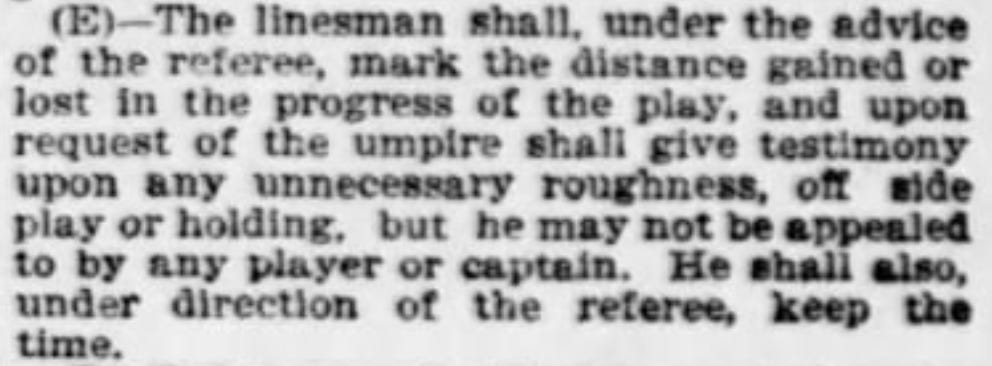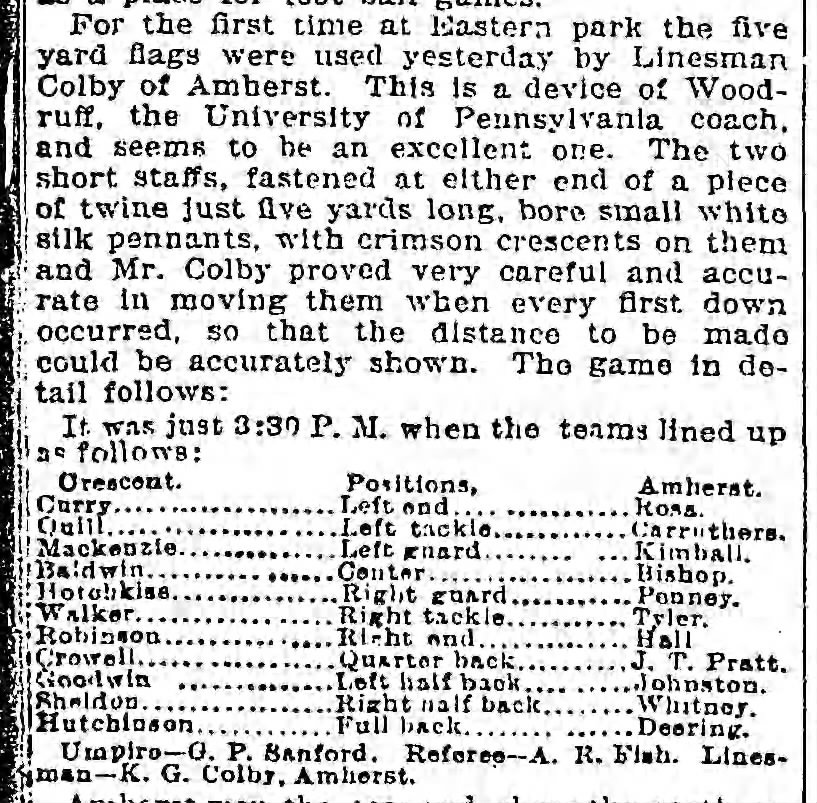Today’s Tidbit... Football’s First Chains Revisited
When I started publishing Football Archaeology, most articles were only a few paragraphs long. Over time, they grew longer, and eventually, I stopped publishing daily Tidbits. Recent research regarding the Crescent Athletic Club of Brooklyn led me to take another look at an early Tidbit concerning Crescent AC’s role in the invention or use of football chains by the officiating crew.
The 1883 rules called for two impartial officials, a referee and an umpire. The referee governed the ball’s position and possession, and tracked the game time, while the umpire handled the players, ruling on fouls. The two officials were overworked and missed many calls, prompting the rulemakers of 1894 to add a third official, the linesman. He relieved the referee of responsibility for tracking the down, distance, and time, and advised the umpire on fouls when asked.
How the linesman was to track the down and distance was unclear. Before 1894, the referee often did so by dropping a handkerchief near the first down spot, but those were sometimes kicked around on purpose or by accident, lessening their value.
One suggested solution had the lineman carry a series of sticks with flags atop them. One flag marked the first down spot, another the second down spot, and, finally, and third flag handled the third and final down, since teams had three downs to gain five yards at the time.
The linesman will probably stand on the touch line [sideline] or near it and with flags on sticks mark each down and keep accurately the record of immediate gains and losses. That is, as soon as a five-yard advance has been made and it becomes first down again, he will begin at that point and keep his marks until another first down comes in the progress of play.
‘Changes In Football Rules,’ Omaha Daily Bee, September 16, 1894.
Whether anyone used the flag-per-down system is unknown, but another system soon emerged that became the dominant solution. As described in the game recap shown below, the host team, Crescent AC, created two sticks topped with white flags bearing crimson crescents, connected by a five-yard stretch of twine. Colby, the linesman, did not have an assistant, so he planted one stick in the ground and quickly stretched the twine the five-yard distance to plant the second stick. Given the pace of play at the time, it took skill or hustle to handle both sticks.
Importantly, the article gives credit for the invention of the sticks and twine system to Pennsylvania coach George Woodruff. Since Crescent AC and Penn played one another in Philadelphia on October 10 and in Brooklyn on October 20, it is possible that Crescent borrowed the idea from Woodruff and Penn. However, the device goes unmentioned in the reports of the Penn-Crescent AC games, and I did not find any other sources to corroborate Woodruff’s role.
Crescent played Cornell a few days later when they mentioned the down-marking device again. The writer also suggested using a light chain rather than a string for greater accuracy (and durability).
People were sufficiently impressed by the new marking system that they used it for the 1894 Harvard-Yale game, with George Pratt, a former Amherst and current Crescent AC captain, acting as the linesman.
Not only did they have the former Amherst captain as the linesman, Pratt gained an assistant, Irving Garfield, who captained the rival Williams football team opposite Pratt in 1892.
The use of a five-yard marking device remained a best practice until 1898, when it was added to the rule book, along with the recommendation that the linesman have two assistants to handle the chains.
After that, chains became a standard sight on football fields, with various suggested improvements to the process over the next 125-odd years. This year, of course, the NFL adopted Sony’s Hawk-Eye system. The human chain gang remains on NFL sidelines as a backup, and we can expect chain gangs to disappear from NFL fields in the near future. However, the old crews will stick around at lower levels for some time, just as instant replay is absent there.
Other stories on the history of the sticks and stick holders include:
If you enjoy Football Archaeology, become a paid subscriber for $5/month or $50/year.
You can also support the site by donating a coffee or buying one of my books:











It's another one of those aspects of football that we modern fans just assume always existed. Love how you show us the true evolution and introduction and try to put credit to where credit is due.